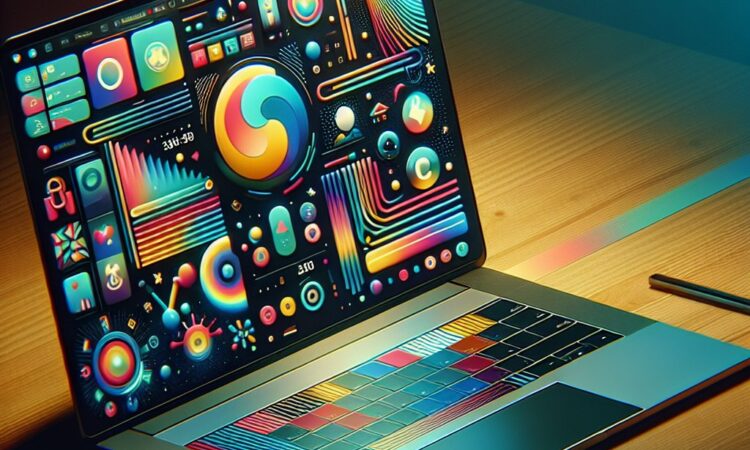Human-Computer Interaction
Human-computer interaction (HCI) is the study of how people interact with computers and other interactive devices. It focuses on the design and evaluation of user interfaces that are easy to use, efficient, and enjoyable for the users.
HCI designers play a crucial role in the development of software applications, websites, and other digital platforms. They aim to create interfaces that provide a seamless interaction experience, ensuring that users can accomplish their tasks efficiently and without frustration.
Good HCI design involves understanding the needs and capabilities of the users, as well as considering the context in which the interaction takes place. Designers need to take into account factors such as user demographics, expertise, and preferences to create interfaces that are tailored to the target audience.
The image displayed above represents a laptop with a colorful user interface, symbolic of the visually appealing and interactive experiences HCI designers strive to create. The laptop’s screen showcases a vibrant and intuitive graphical user interface (GUI) that enables easy navigation and interaction with various software applications.
The GUI features well-designed buttons, icons, and menus that are visually distinct and easily recognizable, enhancing the overall usability of the system. The use of vibrant colors and a modern aesthetic in the user interface adds to the user’s engagement and enjoyment.
Additionally, the image illustrates the concept of responsive design, as the laptop screen adapts seamlessly to different screen sizes and orientations, ensuring a consistent and enjoyable user experience across devices.
HCI designers must consider various principles, such as learnability, efficiency, and satisfaction when creating user interfaces. They conduct user research, usability testing, and incorporate feedback to iteratively improve the interface and ensure it meets the users’ expectations.
In conclusion, human-computer interaction plays a vital role in the design and development of user-friendly and enjoyable interfaces. The focus on creating interfaces that are easy to use and visually appealing contributes to enhanced user experiences and increased productivity. HCI designers continually strive to push the boundaries of user interface design, making computer interactions intuitive, efficient, and satisfying for users.

